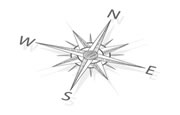October 2015 was an interesting and active month for ballast water regulations in the United States. As a result, we’ve been busy reviewing and analyzing regulatory documents, talking with our peers and playing out various “what if” scenarios for clients with different concerns.
A number decent articles and opinions have already been written about most of the recent activity, so there is no need to re-write good work. However, I thought it might be useful to provide a high-level summary of the various developments, along with resources to access more detailed information, in one location.
This summary is not intended to be comprehensive, but rather a quick resource. Also, the ways in which details may apply to a particular situation can vary. Should you wish to get further information or need assistance, please contact us.
Second Circuit Court Decision Regarding the EPA 2013 VGP, 5 October 2015
This court decision pertains to a petition for review filed by four environmental groups in 2013, shortly after the current Vessel General Permit (VGP) was issued. Of the alleged areas where the EPA acted “arbitrarily and capriciously”, the court agreed with the Petitioners on several points that the EPA will be required to address. In brief, the key points are:
- The EPA is to either adopt a ballast water discharge standard more stringent than the IMO’s or provide a better explanation of why it would not do so;
- The EPA is to give full consideration of onshore treatment and provide more clarity on why this option was not more fully considered previously;
- The 2013 VGP exempted vessels built pre-2009 that operate exclusively on the Great Lakes from the numeric ballast water effluent limits. The court agreed with the Petitioners that this exemption was a result of EPA’s lack of detailed consideration of onshore treatment and their finding that no shipboard treatment technology was available for these vessels. It was argued that these vessels face similar challenges to other vessels and the EPA will need to reconsider this exemption;
- During development of the current VGP, the EPA concluded there was insufficient information to establish numeric Water Quality Based Effluent Limits (WQBELs). The court found the narrative WQBELs insufficient and the EPA will need to include more detailed language for practices and procedures as is done in other areas of the VGP; and
- The EPA is to include monitoring requirements for WQBELs.
The EPA either needs to more fully justify its approach for the above areas or issue a revised VGP that includes provisions corresponding to the court’s decision. It is important to note is that the 2013 VGP remains in effect and a deadline for issuance of a revised VGP was not included in the court ruling. With the current VGP set to expire on 19 December 2018, the EPA was already beginning to take steps toward drafting the 2018 VGP. Due to the time required for the normal permit issuance process and for the EPA to also evaluate the aspects in the court decision, it’s most likely that we won’t see a new VGP any earlier than we would have anyway.
The full court decision can be found by clicking here and a great overview is located here.
California Implements Changes to Ballast Water Regulations, 8 October 2015
The main regulatory action of Assembly Bill 1312 is straightforward – the implementation dates for California’s interim and final ballast water discharge performance standards are delayed. Interim standards will now be implemented at the first arrival (new build vessels) or first drydocking (existing vessels) that takes place on or after January 1, 2020. The new implementation date for the final performance standard is January 1, 2030. Among others, AB 1312 also included provisions that:
- extended the vessel application deadline to use an experimental ballast water treatment system to January 1, 2020;
- changed the ballast water reporting form submission to 24 hours prior to arrival in a California port; and
- included enforcement and monitoring for biofouling management requirements.
Here’s a link to CA’s regulation and the Stakeholder Letter issued by the CA State Lands Commission provides a good summary.
Marine Safety Information Bulletin – Revisions to the USCG Extension Policy, 22 October 2015
The first point to make here is that the bulletin is not the official USCG policy and we await the release of the revised Extension Policy. That said, the bulletin gives stakeholders important information about pending changes. In contrast to the past practice of granting vessel extensions in 1 or 2 year increments, the bulletin indicates that the USCG will now make the vessel extension date the “next scheduled drydocking”. This can have substantive effects on when vessels need to implement and comply with the USCG regulations and changes the game of using drydocking schedules to stave off installing a ballast water treatment system. The USCG will not be re-issuing the extensions already granted, but new extensions will have the revised language. Supplemental extensions, if needed, will still be considered by the USCG.
The Marine Safety Information Bulletin is located here.
USCG Issues a New Frequently Asked Questions Document, 23 October 2015
Although issuance of a Frequently Asked Questions (FAQ) document by the USCG is not the result of a regulatory change, per se, an FAQ can provide valuable insight to the regulatory process. The last USCG FAQ document was released in April 2013, so getting the current USCG position on various topics is helpful. At a length of 19 pages, this FAQ document reflects that both the USCG and stakeholders are maturing into the important and minute details of implementing the USCG ballast water regulations.
Click to read the October 2015 USCG FAQ.
Vessel Incidental Discharge Act
Although the Vessel Incidental Discharge Act (VIDA, S.373) did not see any new regulatory action in October, we must keep in mind that it has not yet completed its legislative life cycle. Since it would impact the current USCG and EPA ballast water regulations if passed, it at least deserves an honorable mention. The VIDA would establish a national and uniform ballast water discharge standard in the US, and the other recent regulatory activities have put this proposed regulation in the spotlight again. The court decision on the EPA’s VGP and the implementation delays that will result from the USCG’s announcement of a revised Extension Policy appears to have increased pressure by supporters for action on the VIDA.
Details on the VIDA can be accessed here.
****
This blog is not a replacement or substitute for the formal posting of regulations and/or updates, and in no way does this blog constitute legal advice. In some instances, links provided on this blog may direct the reader to official source documents. In all cases, official regulatory information directly from the respective regulatory entity should be consulted.





Comments are closed.